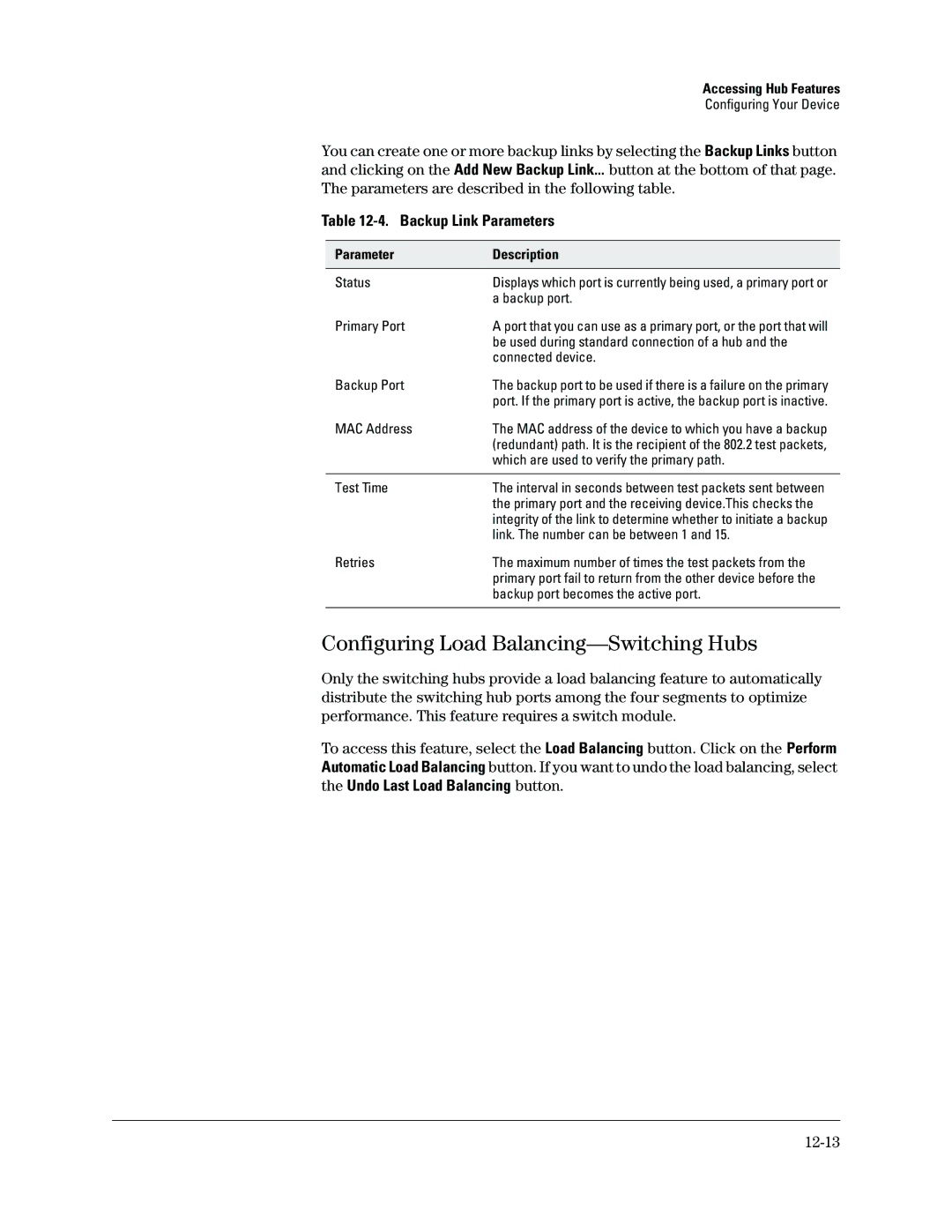Accessing Hub Features
Configuring Your Device
You can create one or more backup links by selecting the Backup Links button and clicking on the Add New Backup Link... button at the bottom of that page. The parameters are described in the following table.
Table 12-4. Backup Link Parameters
Parameter | Description |
|
|
Status | Displays which port is currently being used, a primary port or |
| a backup port. |
Primary Port | A port that you can use as a primary port, or the port that will |
| be used during standard connection of a hub and the |
| connected device. |
Backup Port | The backup port to be used if there is a failure on the primary |
| port. If the primary port is active, the backup port is inactive. |
MAC Address | The MAC address of the device to which you have a backup |
| (redundant) path. It is the recipient of the 802.2 test packets, |
| which are used to verify the primary path. |
|
|
Test Time | The interval in seconds between test packets sent between |
| the primary port and the receiving device.This checks the |
| integrity of the link to determine whether to initiate a backup |
| link. The number can be between 1 and 15. |
Retries | The maximum number of times the test packets from the |
| primary port fail to return from the other device before the |
| backup port becomes the active port. |
|
|
Configuring Load Balancing—Switching Hubs
Only the switching hubs provide a load balancing feature to automatically distribute the switching hub ports among the four segments to optimize performance. This feature requires a switch module.
To access this feature, select the Load Balancing button. Click on the Perform Automatic Load Balancing button. If you want to undo the load balancing, select the Undo Last Load Balancing button.
